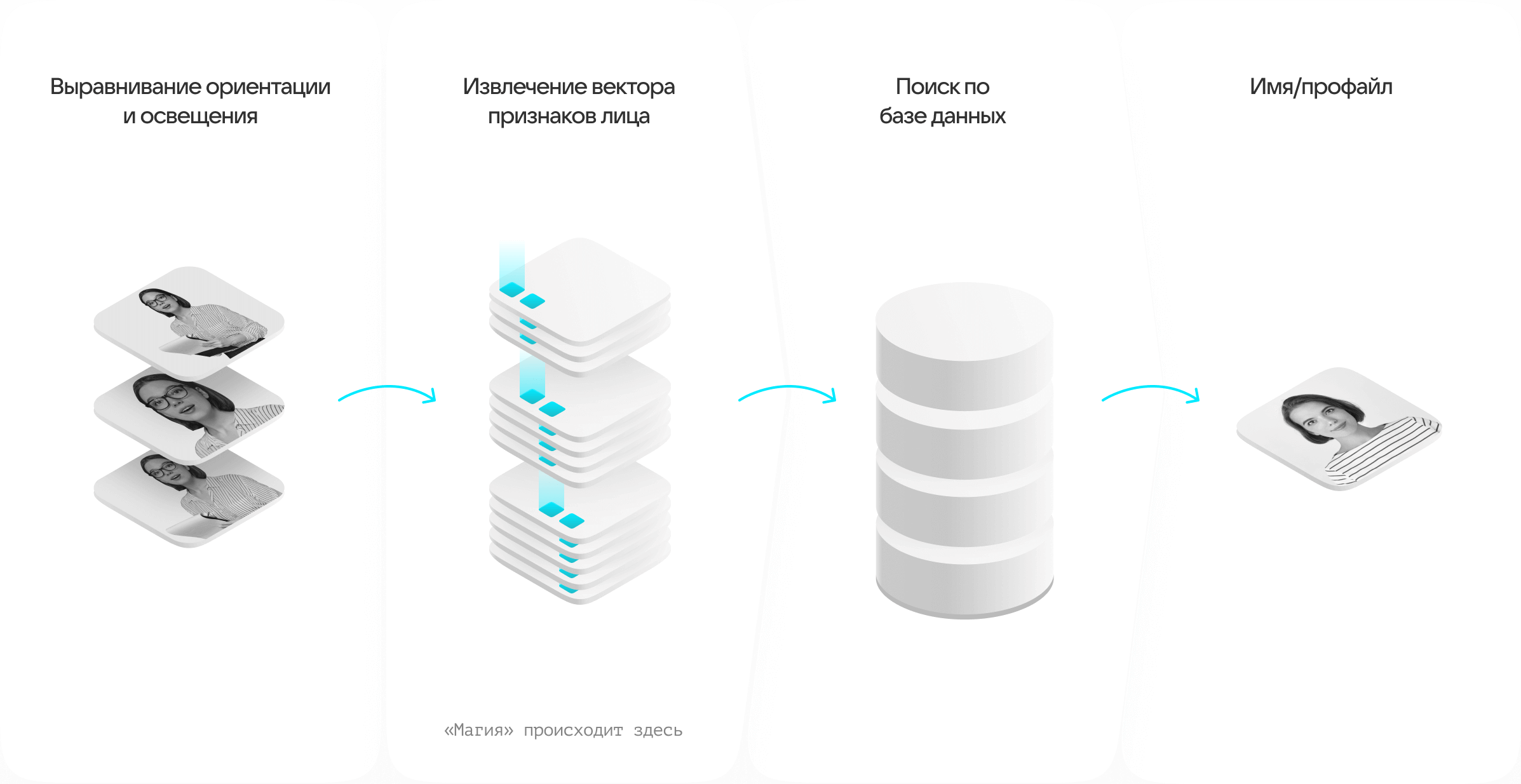To choose the best performing solution, the NtechLab team compared technologies from different vendors. The NtechLab developers wrote a function for comparing two vectors and tested it on databases of up to 10 million images. Tarantool showed the best performance in the comparative tests.
As of today, there is a Tarantool-based biometric database that stores biometric samples (feature vectors) and face detection events.
The production version uses sharding via a dedicated service that connects to Tarantool, that is, this service has addresses of all Tarantool servers, and it determines which instances should be accessed for which query. For heavy demands and fault tolerance, read-only replicas can be added. They partly relieve the master, taking care of the search queries. Developers use Tarantool as a repository with quick access to a certain range of data entries and the ability to filter it with indexes.
As a result, searches in the database of biometric vectors can be performed in the following configurations.
-
“Regular index” allows you to use camera and time indexes at the same time. Thanks to the regular index, you can quickly process queries in typical cases where new database entries are added very frequently. Vector search and comparison queries are performed not for all database entries, but only for those filtered by index.
-
“Quick index” was designed specifically for quick searches on biometric vectors. This separate feature is a great fit for cases with enormous databases (billions of entries) and strict SLA on searches. This index is built on biometric vectors, which allows to significantly reduce the number of comparison operations and increases the speed of searching through the database by more than 10 times. The search process via “quick index” is inverted—first we find entries by vectors, and then we filter them by metadata.
-
This index is built on biometric vectors. It significantly reduces the number of comparison operations and accelerates database search more than tenfold. The “quick index” search is inverted—first we find entries by vectors, and then we filter them by metadata.
-
Yet another operating mode allows connecting both indexes simultaneously. “Quick index” is used for old data, while “regular index” is used for new data. Such a solution combines the advantages of both approaches, but requires more resources. It is also much more difficult to administrate and operate.







